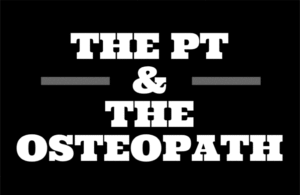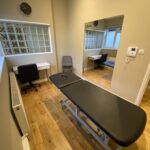With the tennis season coming close to an end and the Olympics showcasing some amazing matches it’s time to look at the unfortunate issue of tennis injuries and how osteopathy may be able to help.
Whatever the level of your game, we see a lot of tennis players at Four Health Osteopathy, from club level players to those wanting to get back into the game after a long break. There is a wide range of injuries they bring with them – repetitive strain in the elbow, fondly referred to as tennis elbow, shoulder rotator cuff injury, calf strain, and so on. However, whatever the injury, we find that if the player doesn’t have good movement and stability in the axial skeleton (spine and pelvis) then this may lead to injury, not only in the back but elsewhere.
In this article I will explore the common complaint of recurrent back injury, which has plagued many top players in the world like Andy Murray right down to us mere mortals, why it can occur in fit individuals, and some tips on how best to defend against it.
Back injuries have affected Andy Murray for some time, but why? If we consider what happens to our bodies when we play tennis it may go some way to explaining some of the underlying causes of back injury. Two significant forces that are exerted on us during a game are impact and rotation, the impact of running with sudden changes of direction and the rotation when we hit the ball.
Our low backs don’t like significant rotation and bending at the same time. During a serve, rotation and bending happen together, which can potentially cause spinal disc injuries. How can we avoid this? The low back has relatively little rotation available compared to the upper back therefore it stands to reason that flexibility in the latter can actually help protect the low back. Gentle rotation exercises for the upper back can help to improve the compliance of this area and limit excessive forces being transmitted into the low back.
When it comes to high impact sports like tennis a degree of fitness before you start will go a long way. This may seem counter intuitive as many of us will want to play tennis to get fit but the reality is that if your body isn’t used to the excessive forces and demands being placed on it the chance of injury is increased. Doing low level drills and court based exercise can be a really good way of doing this rather than just pounding tennis balls back and forth.
The most important thing to remember when playing tennis or any sport is to enjoy it! Getting some exercise and fresh air is good for us all. Here are a few tips that may help to keep you injury free for years to come.
- Use a racket that is the right size and weight for you. Speak to a specialist supplier for help.
- Make sure the grip is the right thickness. Incorrect size can cause elbow and forearm pain.
- Wear appropriate footwear. Good support can limit the chance of foot and ankle injuries.
- Warm up and cool down properly. We can advise you on that!
- If you’re carrying an injury don’t ignore it! Please come and speak to us for advice.




